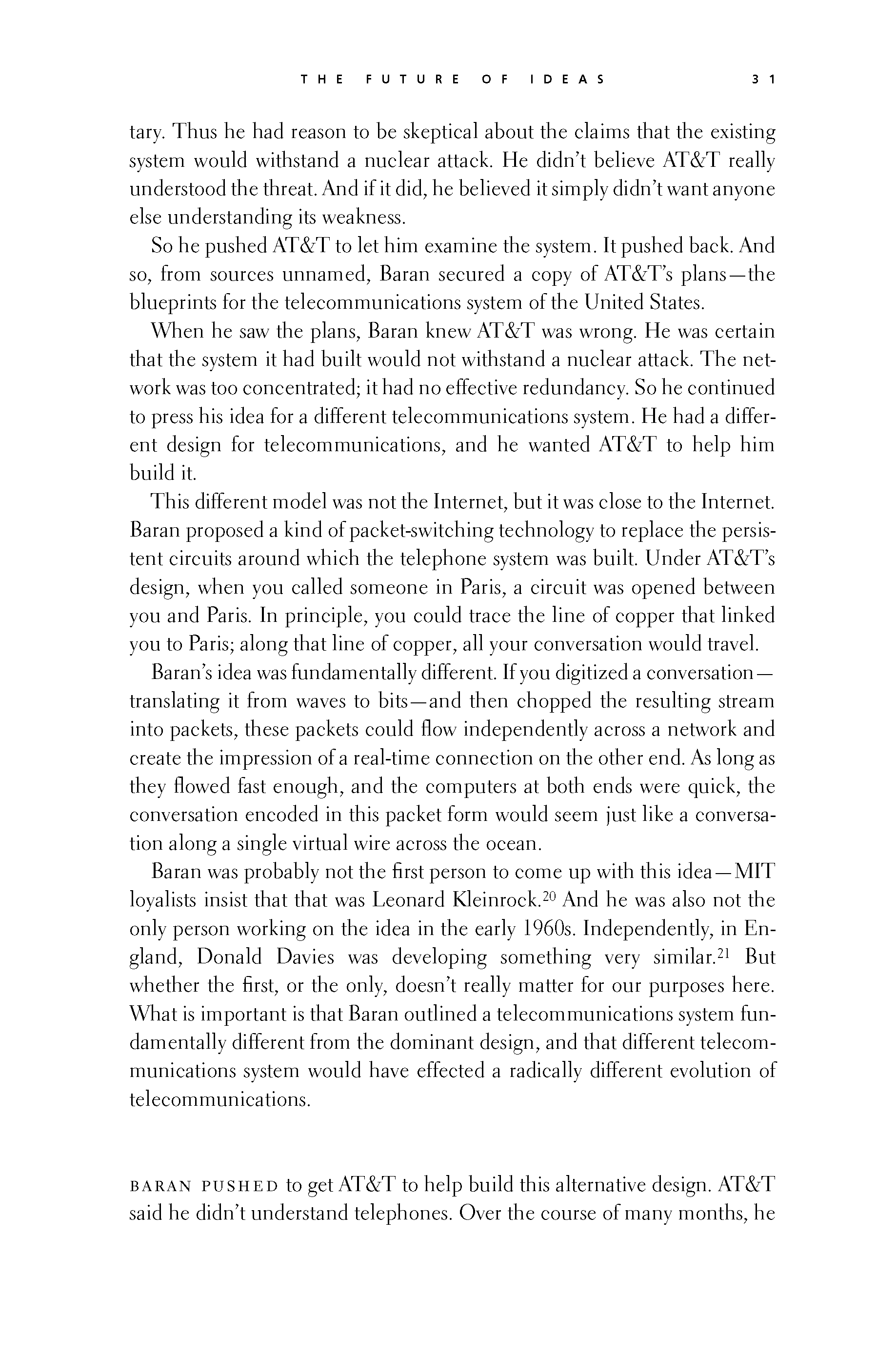 p030 _
-chap- _
toc-1 _
p031w _
toc-2 _
+chap+ _
p032
p030 _
-chap- _
toc-1 _
p031w _
toc-2 _
+chap+ _
p032
tary. Thus he had reason to be skeptical about the claims that the existing
system would withstand a nuclear attack. He didn't believe AT&T really
understood the threat. And if it did, he believed it simply didn't want anyone
else understanding its weakness.
So he pushed AT&T to let him examine the system. It pushed back. And
so, from sources unnamed, Baran secured a copy of AT&T's plans -- the
blueprints for the telecommunications system of the United States.
When he saw the plans, Baran knew AT&T was wrong. He was certain
that the system it had built would not withstand a nuclear attack. The net-
work was too concentrated; it had no effective redundancy. So he continued
to press his idea for a different telecommunications system. He had a differ-
ent design for telecommunications, and he wanted AT&T to help him
build it.
This different model was not the Internet, but it was close to the Internet.
Baran proposed a kind of packet-switching technology to replace the persis-
tent circuits around which the telephone system was built. Under AT&T's
design, when you called someone in Paris, a circuit was opened between
you and Paris. In principle, you could trace the line of copper that linked
you to Paris; along that line of copper, all your conversation would travel.
Baran's idea was fundamentally different. If you digitized a conversation --
translating it from waves to bits -- and then chopped the resulting stream
into packets, these packets could flow independently across a network and
create the impression of a real-time connection on the other end. As long as
they flowed fast enough, and the computers at both ends were quick, the
conversation encoded in this packet form would seem just like a conversa-
tion along a single virtual wire across the ocean.
Baran was probably not the first person to come up with this idea -- MIT
loyalists insist that that was Leonard Kleinrock.[3-20] And he was also not the
only person working on the idea in the early 1960s. Independently, in En-
gland, Donald Davies was developing something very similar.[3-21] But
whether the first, or the only, doesn't really matter for our purposes here.
What is important is that Baran outlined a telecommunications system fun-
damentally different from the dominant design, and that different telecom-
munications system would have effected a radically different evolution of
telecommunications.
///\\\
Baran pushed to get AT&T to help build this alternative design. AT&T
said he didn't understand telephones. Over the course of many months, he
[[31]]
p030 _
-chap- _
toc-1 _
p031w _
toc-2 _
+chap+ _
p032